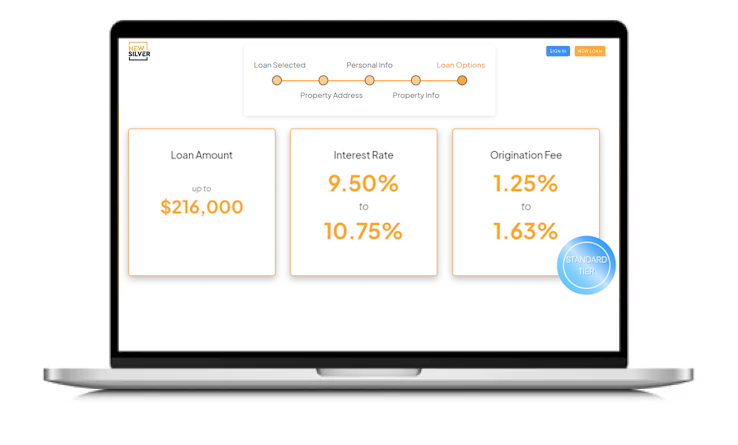Finding the money to invest in real estate can be a challenge. Many investors make use of outside sources for funding like debt or equity and this is a common strategy in real estate investing.
In fact, the majority of properties out there have been successfully purchased using outside funding, helping investors to achieve their financial and investment goals. 1 in 3 investors in the US purchase their real estate with cash outright, but the majority of property purchases are done with the help of a loan.

Raising money for real estate investing can be difficult for newer investors, but it will become easier with some practice and exposure. Once the investor becomes more familiar with the different sources of real estate funding, they can decide which is best suited to their project.
The real key to raising money for real estate investing is to know your own value and the value of the investments you will bring to the deal. By making use of the strategies laid out in this article, investors can learn the best way to raise money for real estate investing and the benefits or drawbacks of each financing method:
Raising Investment Capital
The process of raising money for the purpose of real estate investing will require a decent amount of work from the investor to secure, so expect to do a lot of legwork to make it happen. This is particularly true of the earliest parts of the financing application process. The term used most to describe money used for real estate investing is investment capital. Investment capital includes any money used to purchase property, do renovations and cover other associated costs like closing costs.
Real estate investors have long depended on funding from various sources to open up their own opportunities to invest.
Investment capital in real estate is usually further divided into two different categories – one category is equity and one is debt. Equity, in this case, refers to the funds that are secured by selling ownership in a property. The debt category includes general property loans and loans funded by private lenders and other traditional lenders. These lenders will provide the funds needed if they consider the investment to be a profitable one, and pass if they believe it is not.

Each category has its own set benefits and drawbacks, depending on the type of project the investor has in the works. A debt investor typically earns interest income only, seeing the majority of their returns at the sale of the project. On the other hand, equity investors become entitled to a share of profits through the income from the project after any debt and interest have been paid off.
Using Loans To Raise Money
Starting with the debt category, many investors depend on loans from banks, other partner investors, traditional lending institutions or private money lenders to fund their real estate investments. Private money lenders are typically private investors who offer short-term loans secured by real estate, meaning the property acts as collateral in case of loan default.
As private investors, they are not bound by the same restrictions as banks and can, therefore, provide investors with more flexible loan terms. It’s important to note that these lenders do not normally grant loans for owner-occupied properties, so investors seeking funding for this type of property should seek out a mortgage from a bank instead.

Primate money funding is more appropriate for real estate deals such as fix and flips, construction loans and small-balance commercial projects. The major benefit of this funding method is that private money loans can be granted within a few short days. With faster loan approvals, more flexible terms and quick loan grants, private money loans are best used for projects that traditional funders like banks will not cover. The amount of time that goes into the loan application, underwriting, and approval process can make or break any project.
Traditional lenders like banks are more likely to fund owner-occupied properties and will be hesitant to take on projects like fix and flips which are inherently riskier. Banks typically hold the property note until the borrower’s loan is repaid in full over longer terms. Since banks most commonly provide funds for owner-occupied properties, the risk is lower and they can provide investors with lower interest rates. Banks lend only from a designated pool of funds overseen by set regulations, causing them to highly prefer low-risk borrowers.
Another important factor to recognize with bank loans is that they offer no certainty of approval until the later stages of the underwriting process. Both types of loans have their advantages and disadvantages, and it’s up to the real estate entrepreneur to determine the best fit for their project.
Working With Partners To Fund Real Estate Deals
Many newer investors team up with a more experienced partner investor in order to be able to fund a real estate deal successfully without the burden of debt. This involves finding another investor that has the funds available and convincing them of the value of joining in on the deal you have canvassed. This can be easier said than done. Bear in mind that working with a partner is not for everyone. Some individuals prefer to work alone, while others prefer to have another person providing financial and managerial input.
For many investors, working with another, more experienced investor is a great way to get access to capital while learning the ropes and bettering their own investment portfolios. This arrangement would also mean that there is someone else in the deal taking on a portion of the risk and who is able to share in the responsibilities. The key is that if one party is not bringing funding to the equation, they still have to bring something of value to the deal – this could be the lead for the property, a network of buyers or something else.
There are definite benefits to a strategic partnership, like sharing networks between parties and having more resources available to go around. Having a partner can also come with its own set of challenges. Any profits made from the venture will have to be shared, tax structures can be slightly more complicated, and decision making will need to involve all parties that have a stake in the business
When working with a partner investor, it is important to create a legal entity around the deal such as an LLC or S corp. Real estate investing and business partnerships can be rewarding, bringing advantages to all involved parties, but if not managed well, it can be just as disastrous for all. Forming a holding company that places formal structures gives some protection for all parties involved should the project not work out as originally projected.
Using Crowdfunding To Fund Real Estate Investments
Crowdfunding is a new way of funding real estate investment that is slowly becoming more commonplace, particularly with millennial investors. Investors using this method get access to a pool of funds that doesn’t require direct contact with other investors and that has a more diverse investor group. Some crowdfunding platforms even allow cross-border investing, which can give investors outside the US the opportunity to get exposure to local real estate markets. Crowdfunding can also make real estate investing more accessible and affordable. Many new online platforms have launched around this idea, allowing investors to share their investment opportunities easily with an online pitch.
The big draw in crowdfunding stems from being able to get funding for a project quickly with little to no upfront fees. Pitching your project on a crowdfunding platform can additionally be a valuable type of marketing tool. Real estate projects listed on these platforms typically gain a lot of exposure quickly.

One caveat of crowdfunding is that these platforms do not necessarily guarantee that the investor will raise all the capital they need or that the investor will meet the criteria to be able to share their property. Different platforms can have different requirements and vetting processes, and there are also some regulations surrounding the crowdfunding of real estate before the investor is able to get started. The most prevalent method of real estate crowdfunding is based on equity.
What Is Equity Crowdfunding?
Equity crowdfunding is where an asset such as a real estate property is purchased by a group of individual investors via an entity created specifically for the purpose of owning the asset. These people effectively own shares of the asset through their financial contributions, similar to owning shares in a business.
The greatest benefit of this type of crowdfunding is that anyone can invest in the opportunity you offer, and you gain access to a wider pool of investors from various backgrounds. The managing entity then executes the plan for the asset, whether it be renovating and selling or finding tenants, and the shareowners wait for their ROI to come in.
The people owning these “shares” then also earn a return of income from the asset, which is measured in percentage terms. This income comes from the sale of the asset or from rental income earned from renting it out to tenants. The size of the shares these investors hold then dictates how big their dividend payouts will be.
Final Thoughts
Investors who do not have a lot of seed money of their own should not think that real estate investing is off the table for them. From taking out loans from private lenders, teaming up with another investor or turning to crowdfunding, there are many ways to raise investment capital for real estate investing – even if it requires a little extra legwork to get started.
The key to raising this capital without a lot of personal funds is to know what value you can bring to the table in other ways, whether it be by sourcing the deal or bringing in a network of potential buyers. Any of these investment funding strategies can put you on the road to achieving the goals you set for your real estate project successfully. The majority of real estate deals are funded using some type of debt or equity investment capital, and if used for the right project using outside funding can be a valuable tool in the investor’s toolbelt.



